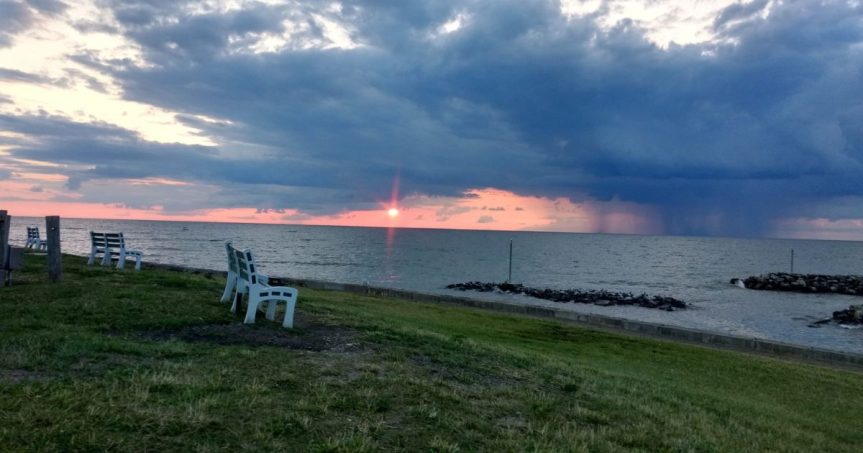Rediscovering Iowa’s Hidden Treasures on Historic Route 6
Have you ever wondered what it would be like to step back in time and explore the heartland of America as it was in days gone by? Historic Route 6 in Iowa offers just that—an unforgettable road trip through charming communities, each with its own unique story to tell. Whether you’re a history enthusiast, a road trip aficionado, or a local explorer, this blog post will guide you on a captivating journey along Iowa’s Historic Route 6. Buckle up and get ready to uncover the rich tapestry of history, culture, and adventure that awaits you.
Introduction to Historic Route 6
Iowa’s Historic Route 6, also known as the Grand Army of the Republic Highway, stretches across the state from Davenport to Council Bluffs. This iconic route is not just a road but a portal to the past, offering travelers a glimpse into Iowa’s rich history and cultural heritage. Originally part of the transcontinental Route 6 that spanned from Massachusetts to California, Iowa’s section stands out for its well-preserved landmarks and vibrant communities. In this blog post, we will traverse this historic highway, exploring the key communities, landmarks, and attractions that make this route a must-visit for anyone passionate about history and adventure.
The Journey Begins
Our road trip starts in Davenport, a city known for its beautiful riverfront and vibrant arts scene. Davenport is the perfect launching point for our adventure, offering a blend of modern amenities and historic charm. From there, we’ll head west, visiting towns and cities that each have their own unique stories and attractions.
Davenport
Davenport is home to the Figge Art Museum and the historic Village of East Davenport. Stroll along the Mississippi River or enjoy a meal at one of the many local eateries. The city’s history is deeply intertwined with the river, making it a fascinating starting point for our journey.
Wilton
Next, we stop in Wilton, famous for the Wilton Candy Kitchen, one of the oldest ice cream parlors in the country. This small town offers a sweet slice of Americana, where you can enjoy handmade treats and step into a bygone era.
West Liberty
West Liberty is known for its historic downtown and the West Liberty Heritage Foundation, which preserves the town’s rich history. Take a walk through the charming streets and visit the local museum to learn about the early settlers and historic events that shaped the community.
History Comes Alive
Historic Route 6 is a living history book, with each community offering a unique chapter. Let’s explore the historical significance of some of these towns and cities.
Grinnell
Grinnell, named after its founder Josiah Bushnell Grinnell, is home to Grinnell College, one of the oldest liberal arts colleges in the United States. The town is rich in architectural heritage, with numerous buildings listed on the National Register of Historic Places. Discover the stories of early settlers and the town’s role in the Underground Railroad.
Newton
Newton is a city with a rich industrial history, famously known as the home of the Maytag Corporation. Visit the Jasper County Historical Museum to learn about Newton’s industrial past and the impact of the Maytag family on the community.
Adel
Adel boasts a picturesque downtown with beautifully preserved 19th-century architecture. The Dallas County Courthouse, built in 1902, is a stunning example of Beaux-Arts architecture and serves as a symbol of the town’s historical significance.
Practical Road Trip Tips
Planning a road trip along Historic Route 6 requires a bit of preparation to ensure a smooth and enjoyable experience. Here are some practical tips to help you make the most of your adventure.
Where to Stay
Consider staying in historic bed-and-breakfasts or charming inns along the route. Towns like Grinnell and Newton offer unique accommodations that add to the overall experience. Booking in advance is recommended, especially during peak travel seasons.
Where to Eat
You can’t go wrong with local diners and cafes that serve up delicious comfort food. Be sure to stop at places like the Wilton Candy Kitchen for a sweet treat and local eateries in each town to savor regional specialties.
What to Pack
Pack essentials like a good road map, plenty of snacks, and a camera to capture the scenic beauty and historic landmarks. Comfortable clothing and walking shoes are a must, as you’ll want to explore each community on foot.
Engaging the Community
One of the joys of traveling along Historic Route 6 is the opportunity to engage with local communities and support small-town economies. Let’s highlight some of the businesses, initiatives, and events that make each stop special.
Local Businesses
From antique shops in West Liberty to artisanal crafts in Adel, each town boasts unique local businesses that reflect the community’s character. Spend some time browsing and shopping to support these small enterprises.
Community Initiatives
Many communities along Route 6 have initiatives aimed at preserving their heritage and promoting tourism. For example, the Route 6 Tourist Association works to highlight the historical and cultural significance of the highway. Participating in local events and festivals is a great way to connect with residents and immerse yourself in the local culture.
Special Events
Keep an eye out for special events like the annual Route 6 Auto Show or historical reenactments in Newton. These events provide a deeper understanding of the community’s heritage and offer fun, engaging activities for visitors.
Conclusion
Traveling along Iowa’s Historic Route 6 is more than just a road trip—it’s an immersive experience that connects you with the rich history and vibrant communities of the heartland. From the bustling city streets of Davenport to the charming small towns like Wilton and Adel, each stop along the route offers a unique glimpse into Iowa’s past and present.
If you’re a history enthusiast, road trip aficionado, or local explorer, don’t miss the chance to discover the hidden treasures along this iconic highway. Pack your bags, hit the road, and create unforgettable memories as you explore the diverse cultural landscape of Iowa’s Historic Route 6.
Are you ready to start your adventure? Book a call with our travel experts today and get personalized recommendations for your Historic Route 6 road trip. Happy travels!



